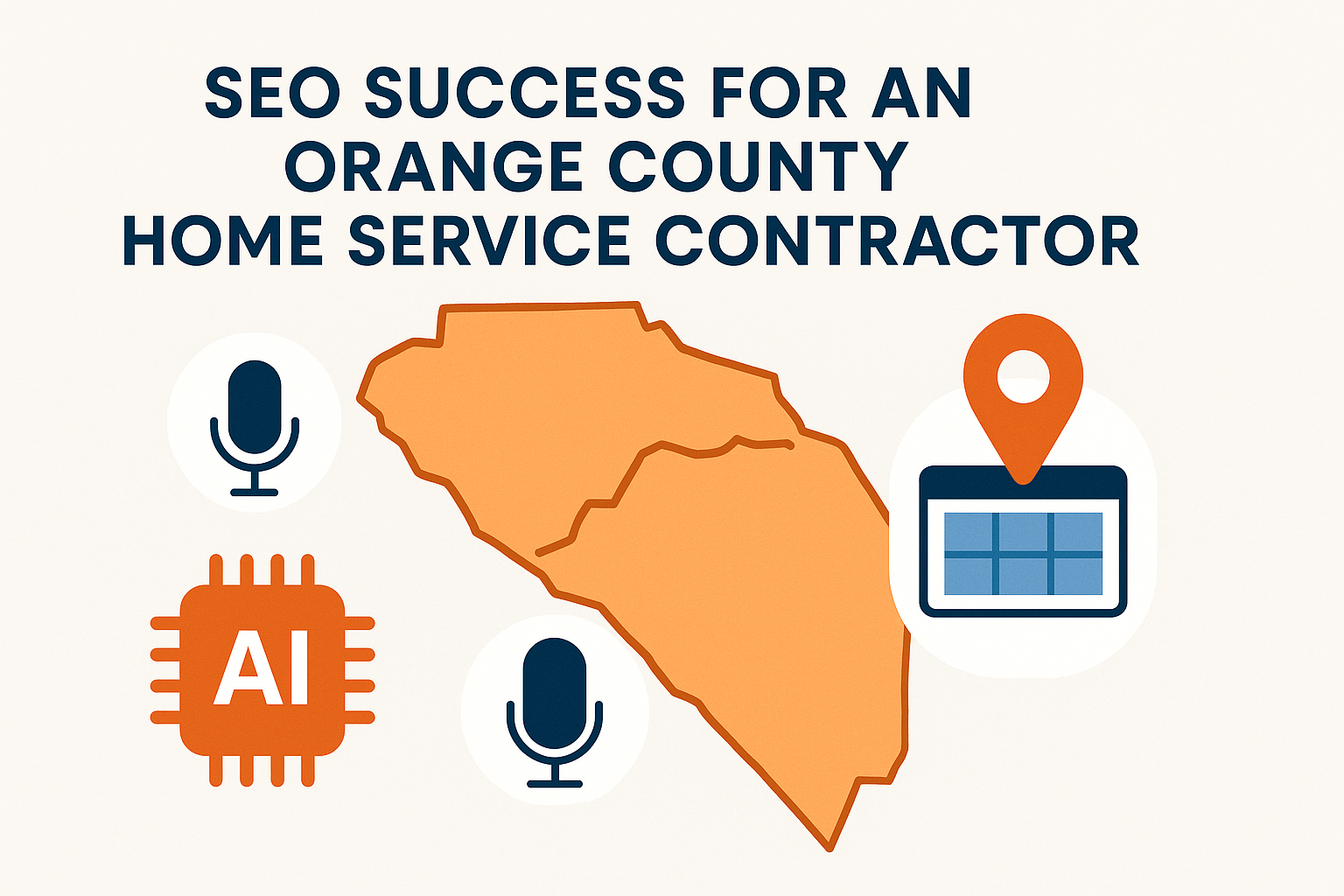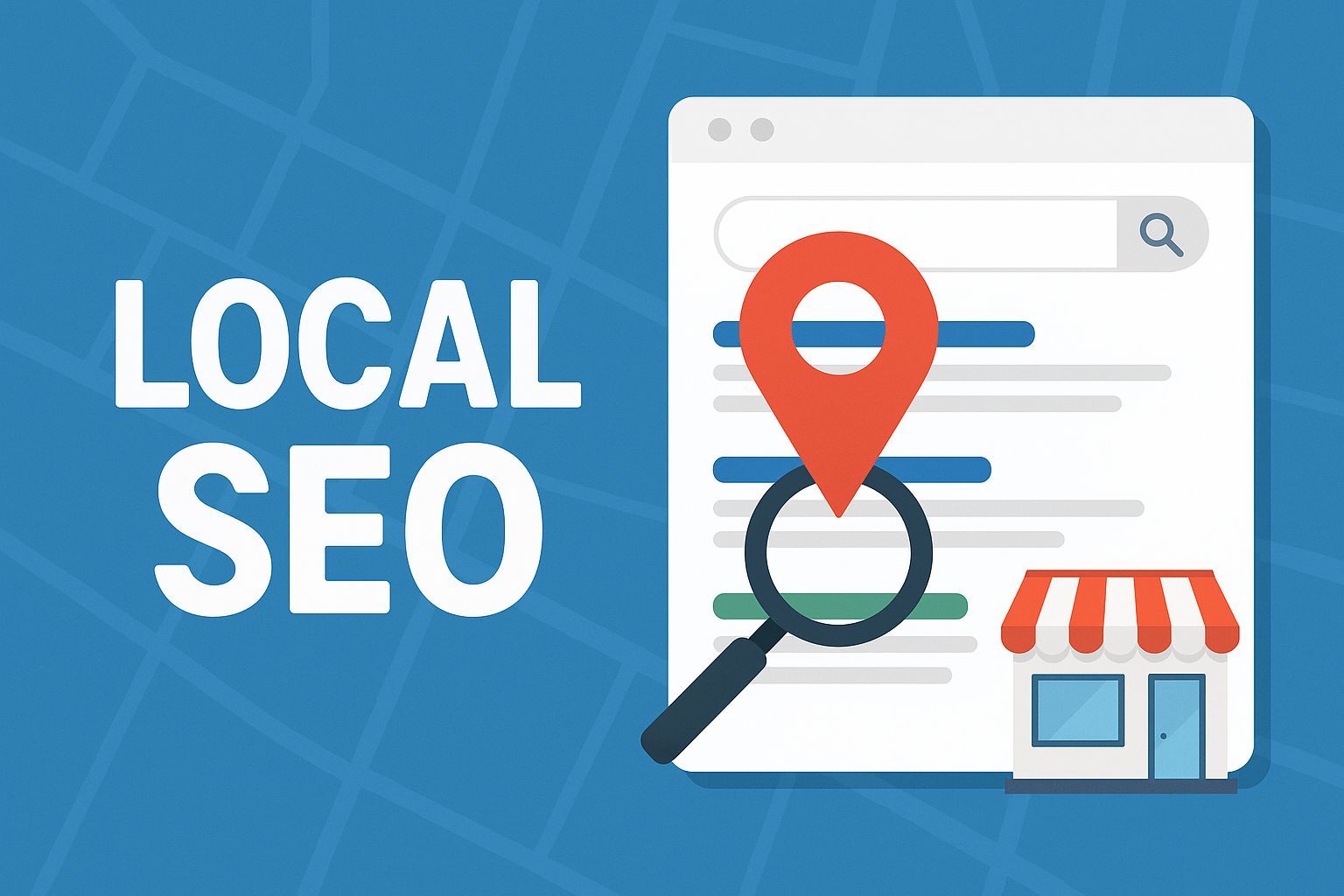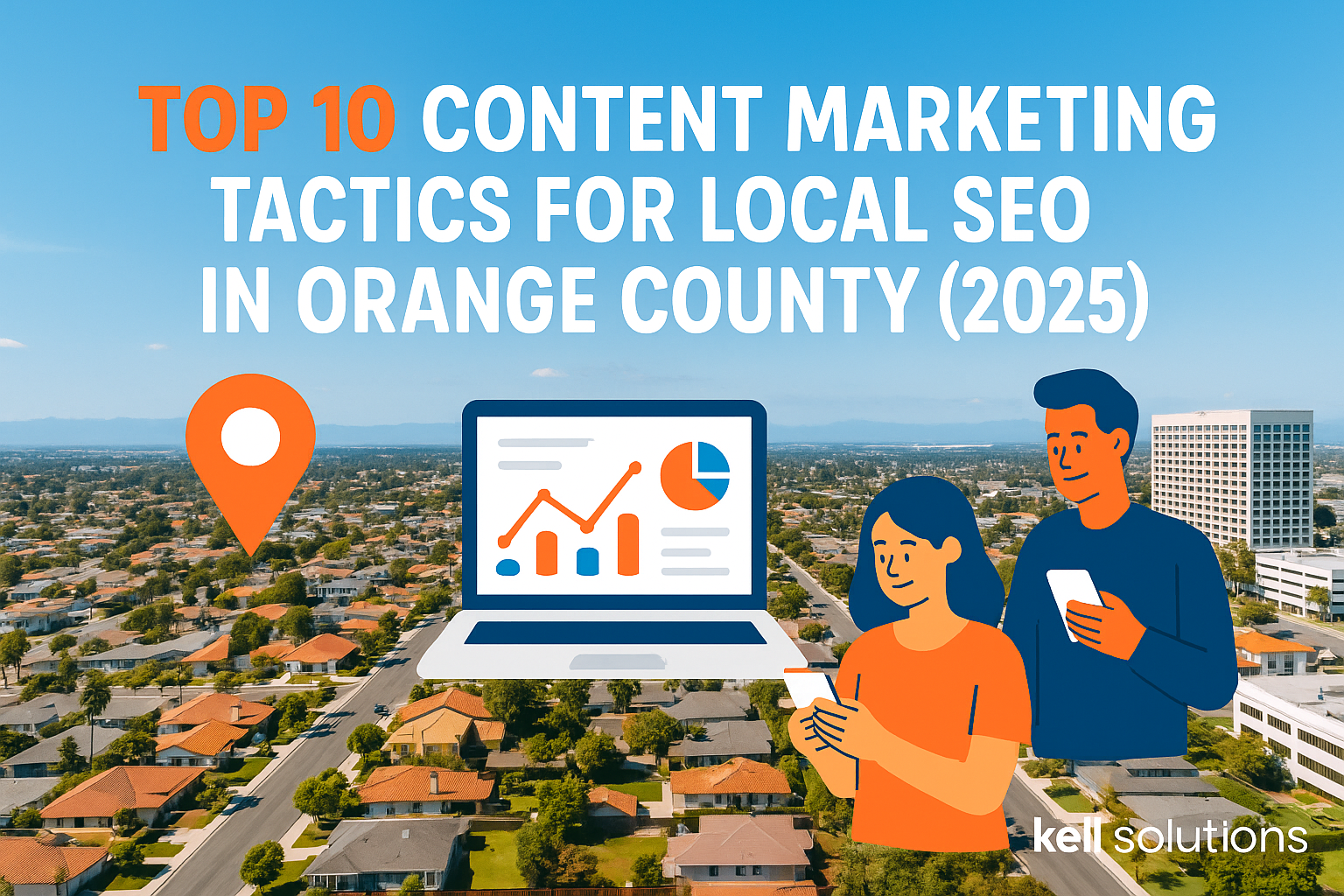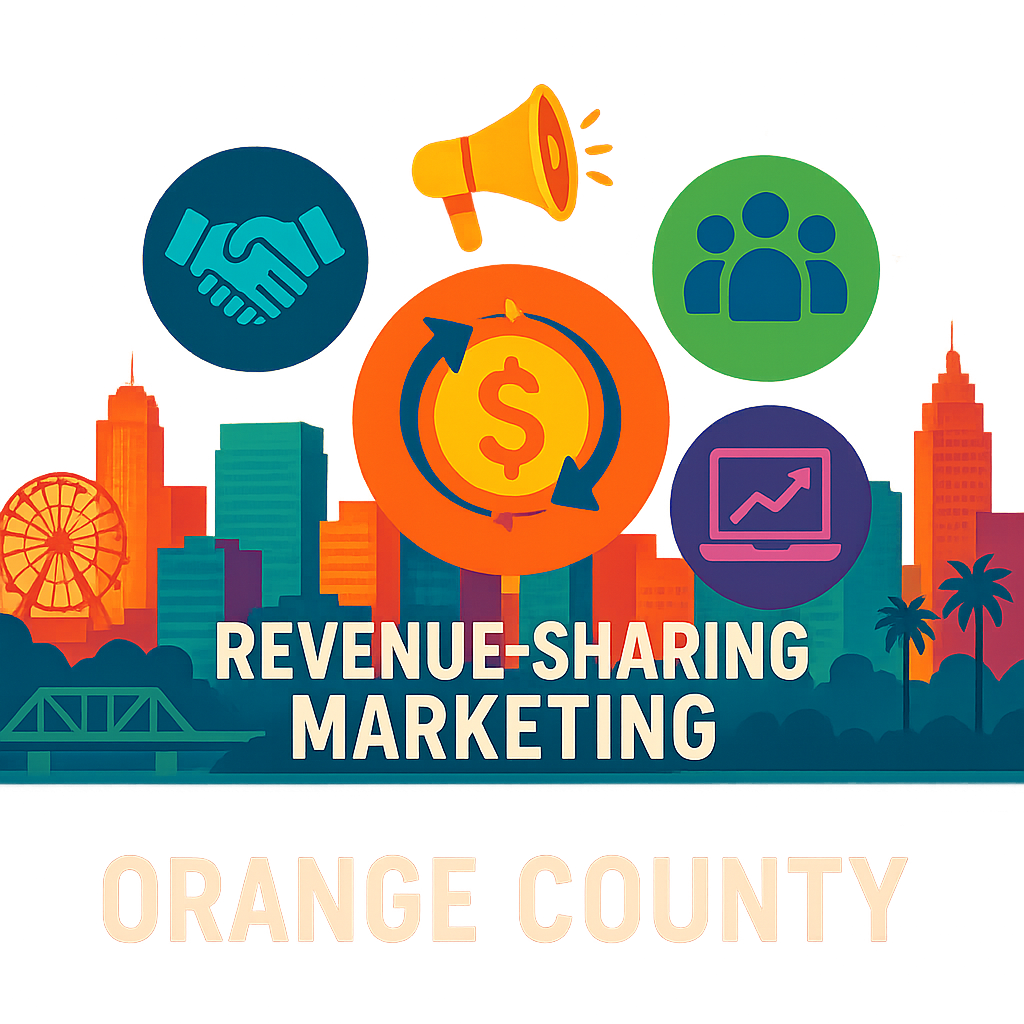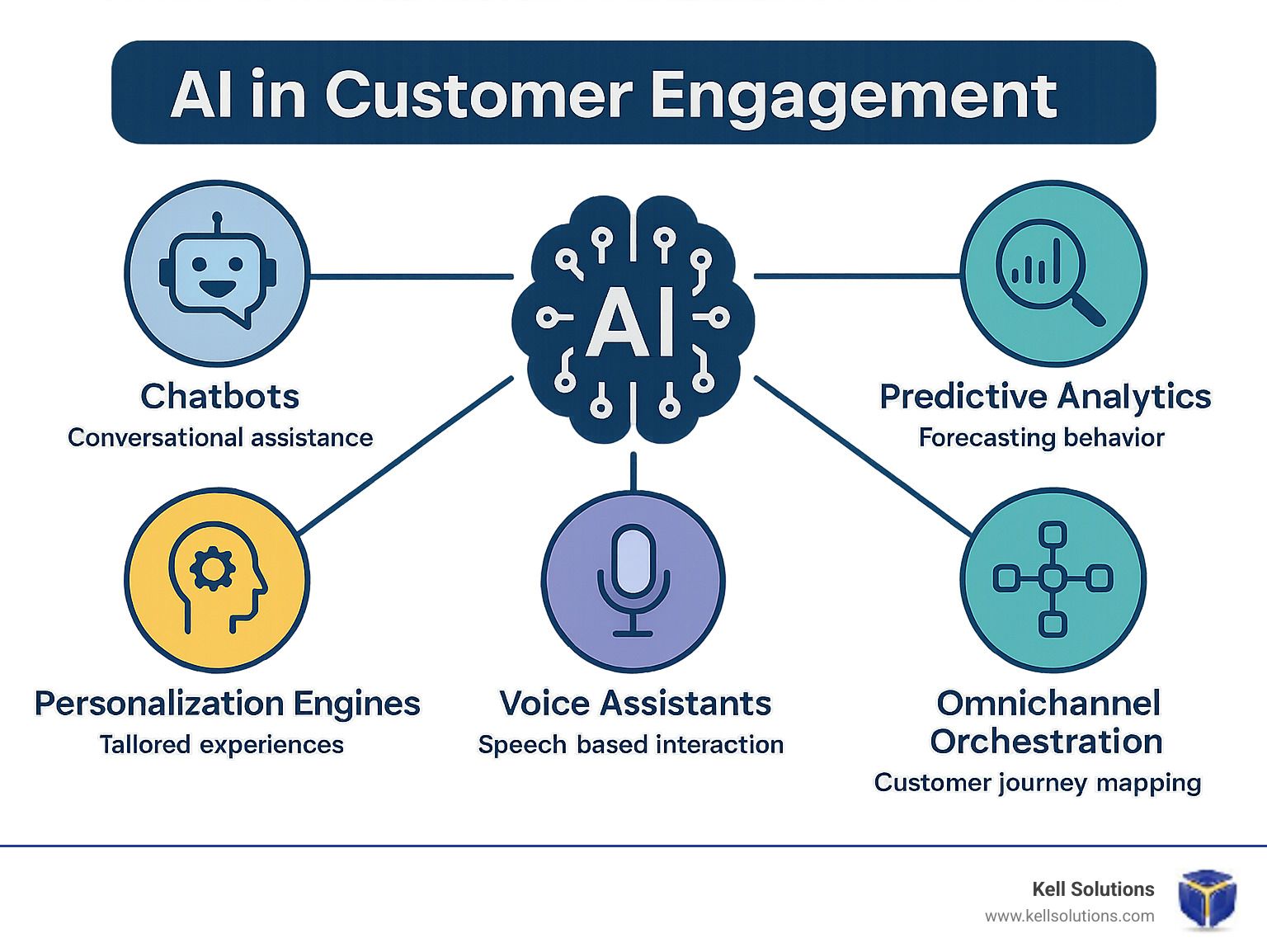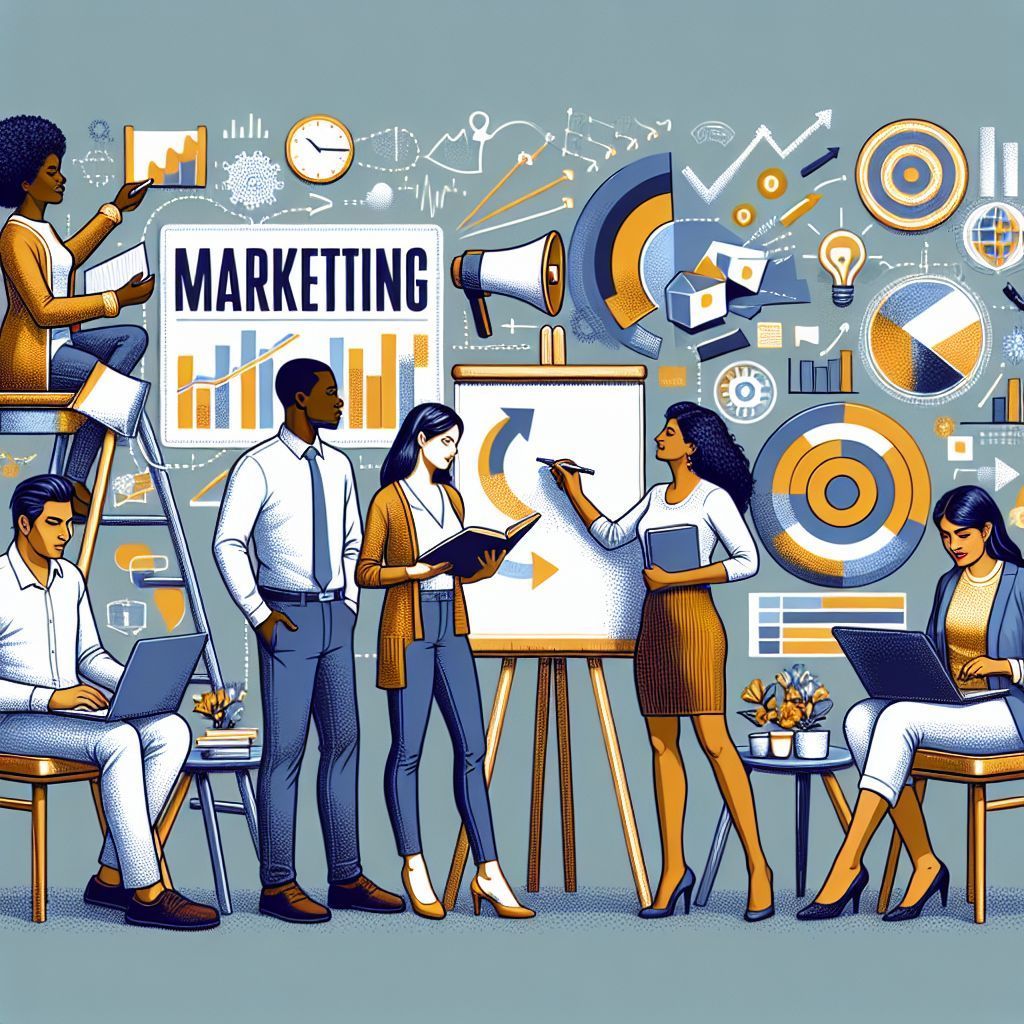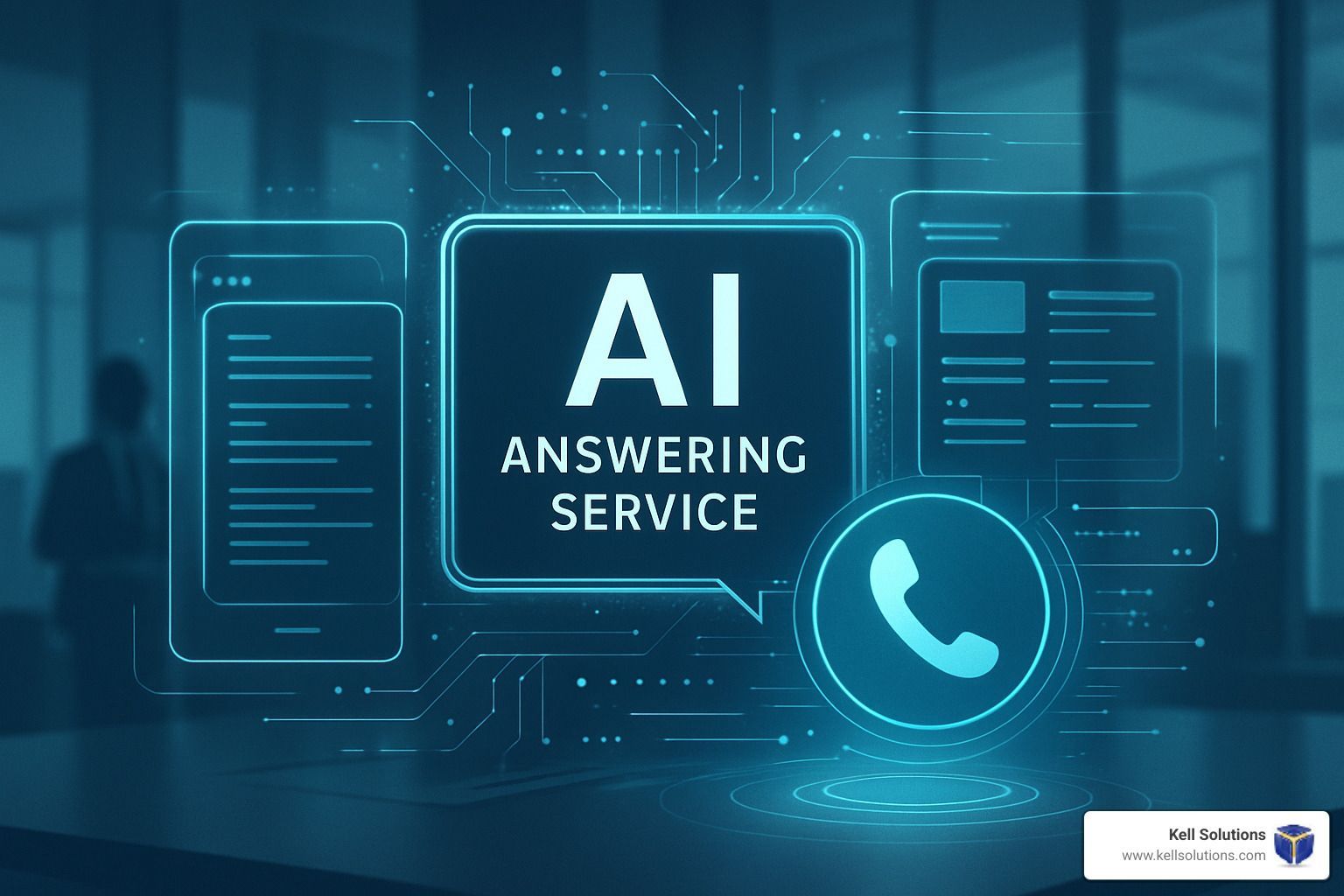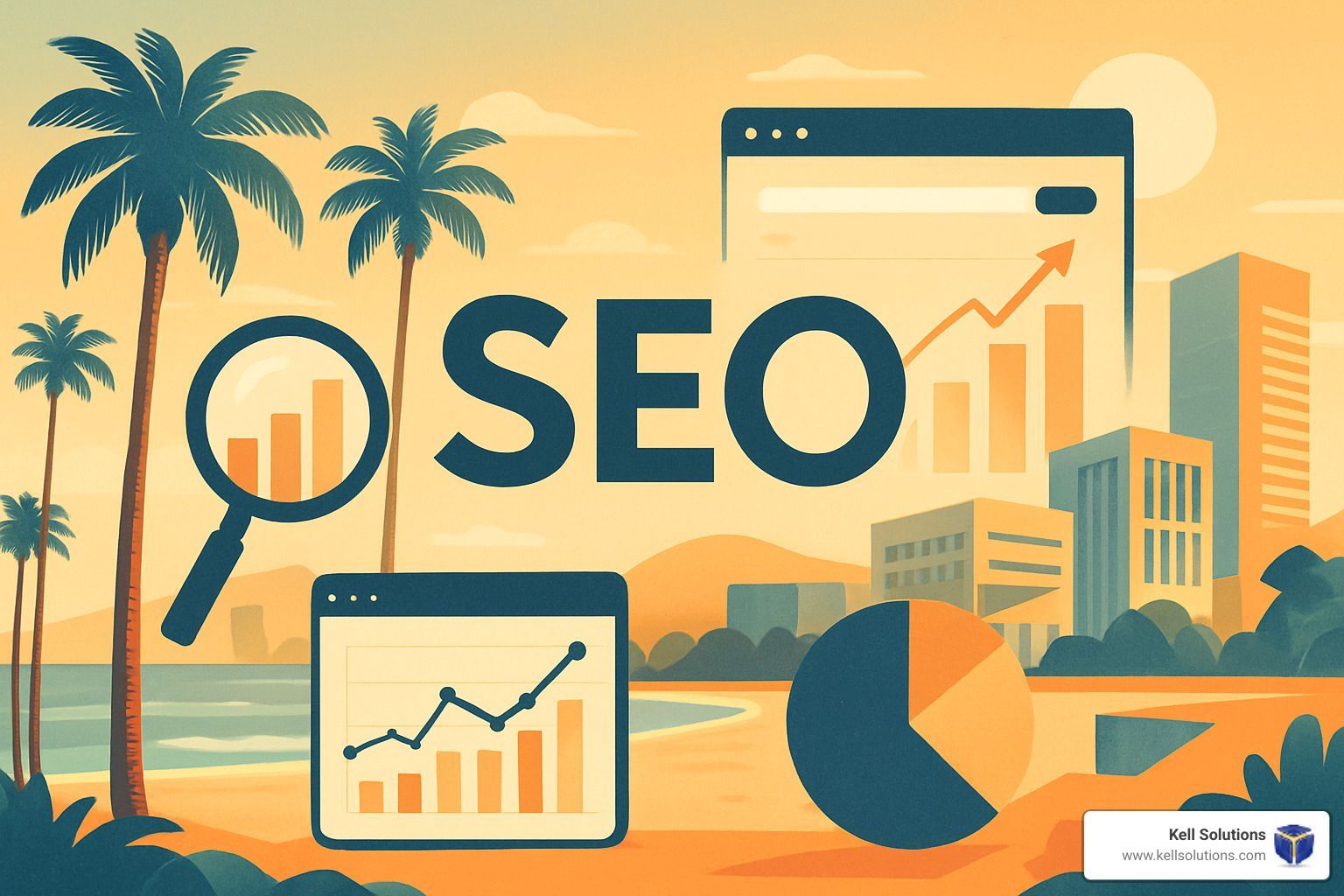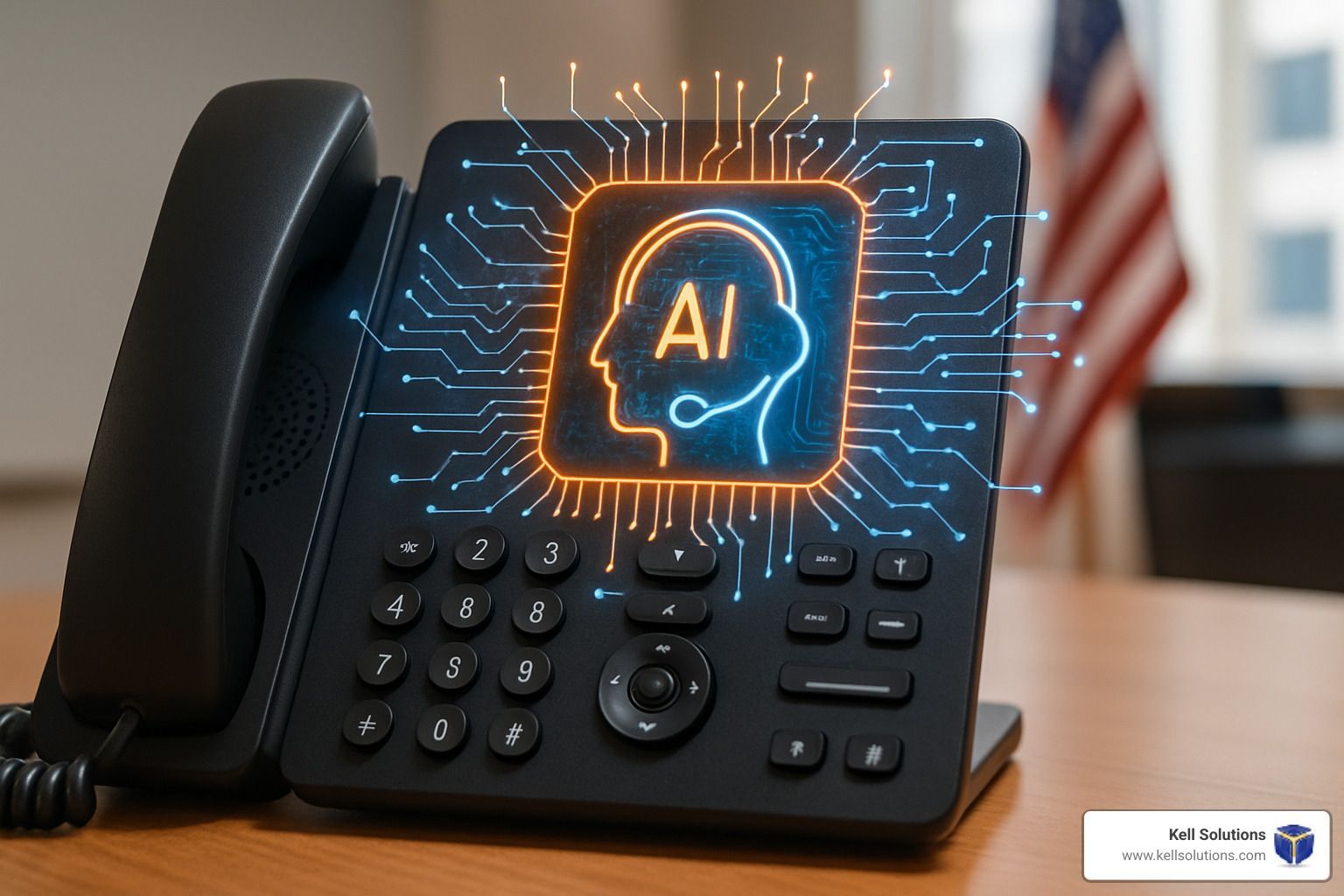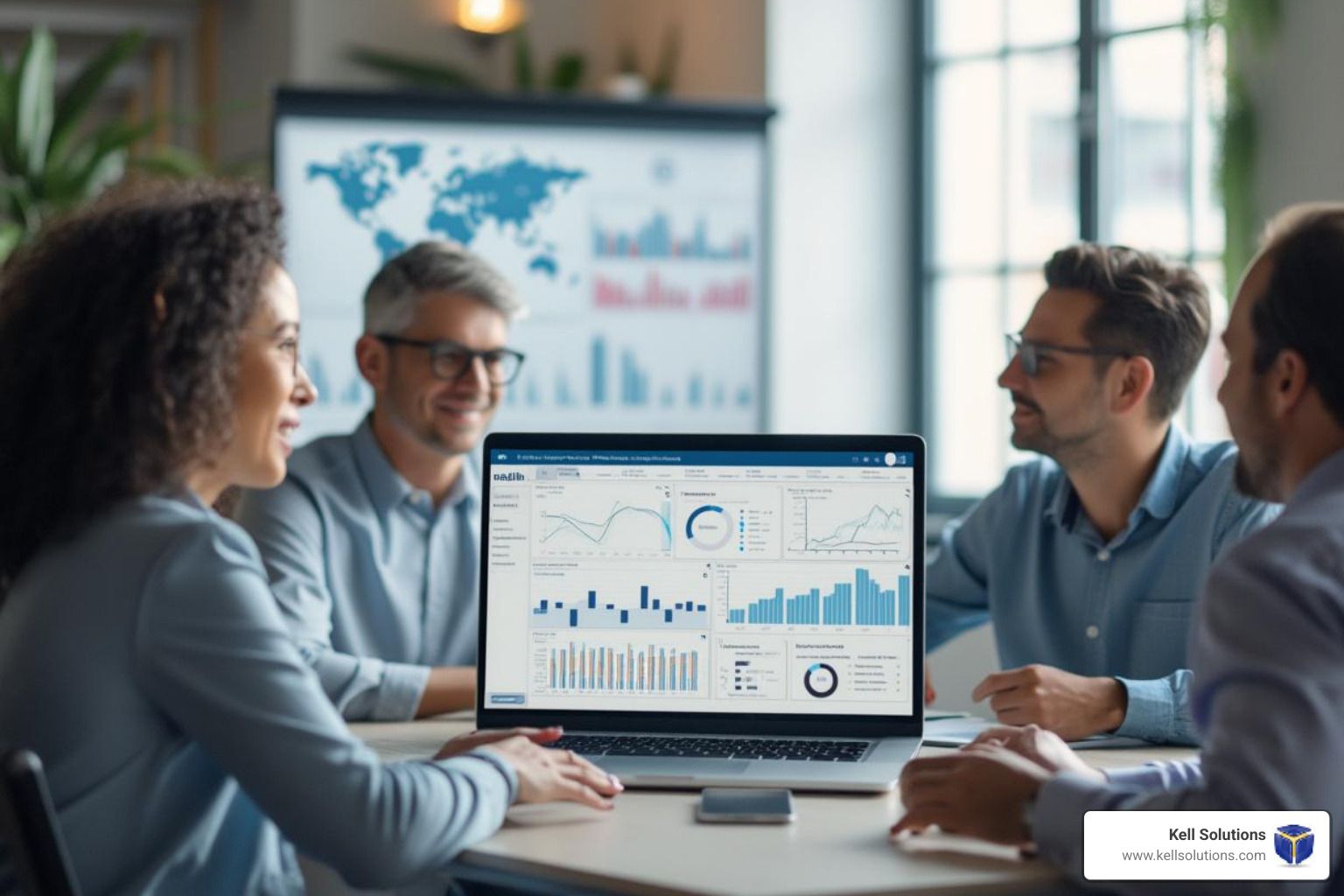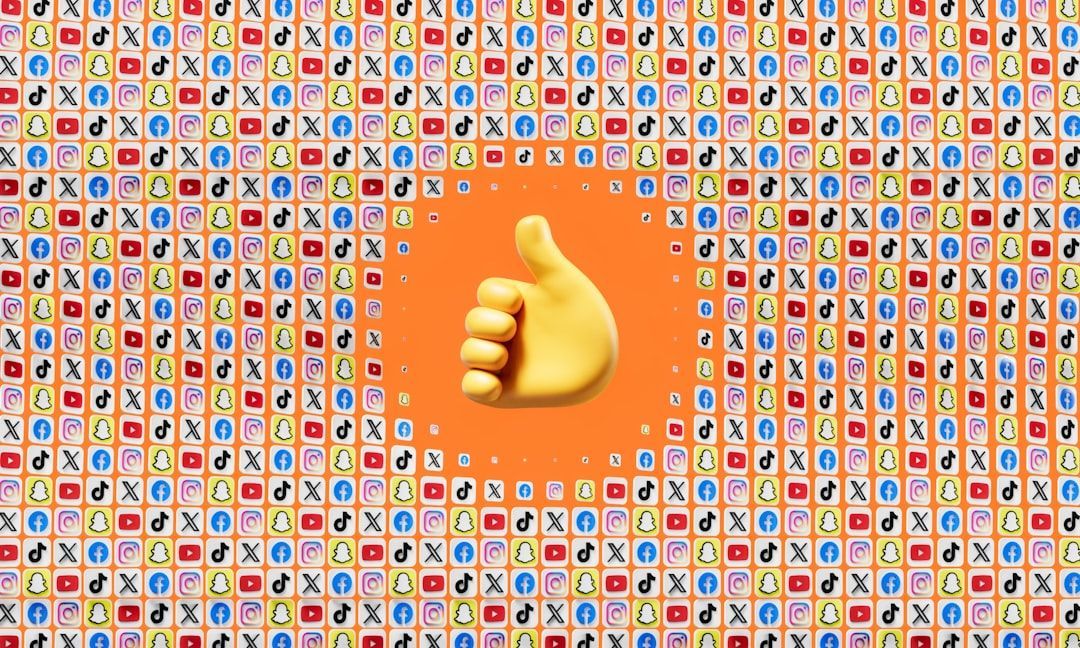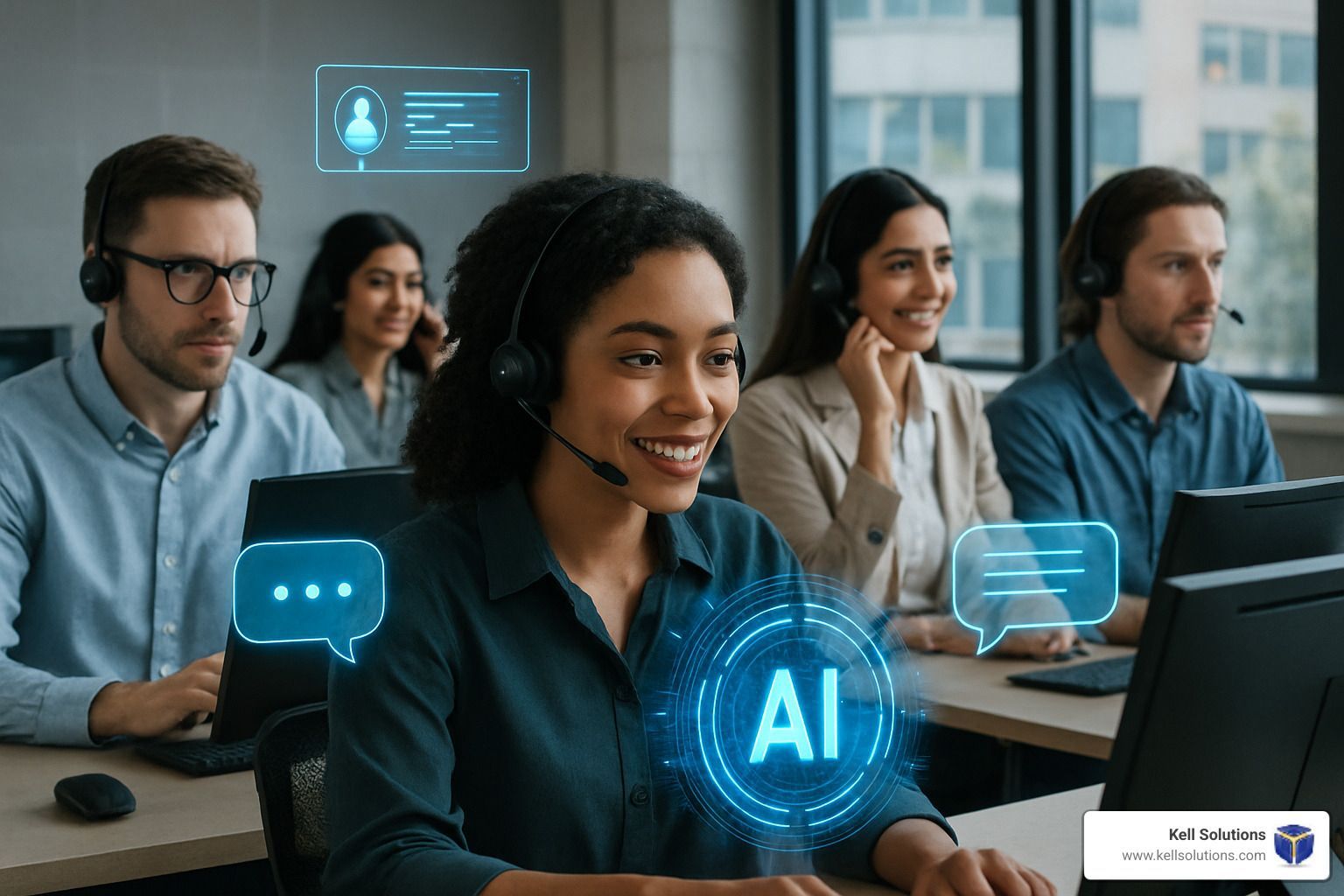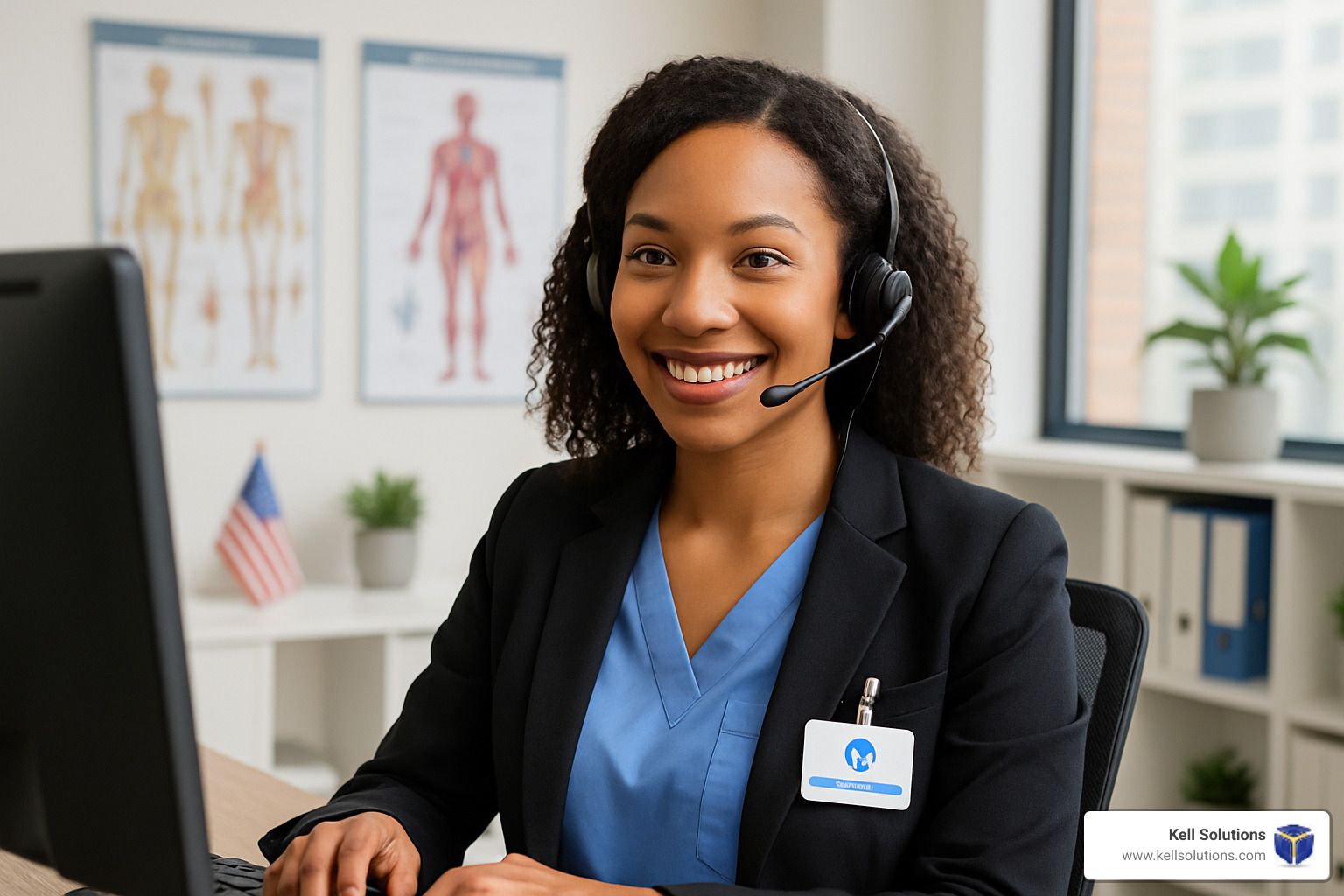AI Training Strategies: Build Digital Literacy & Confidence Foundations
Building Confidence and Competence

Key Takeaways
- Developing AI literacy is now essential for all organizations, with a structured training approach yielding 42% higher adoption rates than ad-hoc methods
- Role-specific AI training is 3x more effective than generic programs, allowing employees to immediately apply skills to their daily workflows
- Organizations that establish AI champions see 67% faster company-wide implementation and significantly reduced resistance to new technologies
- Hands-on practice with real business problems produces 89% better retention of AI skills compared to theoretical learning alone
- WSI's digital transformation experts can help design customized AI literacy programs that align with your specific business objectives and team capabilities
The AI revolution isn't coming—it's already here. Yet many organizations find themselves struggling with a workforce unprepared to leverage these powerful tools effectively. While 91% of businesses have invested in AI technologies, only 22% report successful implementation across their operations. The missing piece? Proper AI training strategies that build both literacy and confidence.
Why AI Literacy Is No Longer Optional in Today's Digital World
In today's rapidly evolving digital landscape, AI literacy has transformed from a competitive advantage to a fundamental business requirement. Organizations that fail to equip their teams with AI skills risk falling behind competitors who are already harnessing the technology to streamline operations, enhance customer experiences, and drive innovation. The ability to understand and effectively use AI is quickly becoming as essential as basic computer skills were in the early 2000s.
Looking beyond the hype, the practical benefits of AI literacy are substantial and measurable. Companies with AI-literate workforces report 35% higher productivity, 41% faster problem-solving, and 28% improved customer satisfaction scores. These aren't just tech companies—these improvements span manufacturing, healthcare, finance, retail, and virtually every other sector.
WSI's digital transformation experts have observed that the organizations seeing the greatest returns from AI investments are those that prioritize comprehensive training programs that address both technical skills and psychological barriers to adoption. Without addressing both elements, even the most sophisticated AI tools remain underutilized.
The Growing AI Skills Gap
The disconnect between available AI tools and workforce capabilities continues to widen at an alarming rate. While 82% of organizations are increasing their AI investments, only 23% have corresponding training programs in place. This creates a critical skills gap where expensive technologies sit idle or underutilized because employees lack the knowledge and confidence to integrate them into workflows. The World Economic Forum predicts that by 2025, 85 million jobs will be displaced by AI, but 97 million new ones will be created—most requiring AI literacy as a fundamental skill.
How AI Is Changing Every Industry
No sector remains untouched by AI's transformative impact. In healthcare, AI now assists with everything from administrative tasks to diagnostic support, with medical professionals using natural language processing to extract key information from patient records and predictive analytics to identify at-risk patients. Retail organizations leverage recommendation engines and inventory optimization algorithms that have become essential to remaining competitive. Manufacturing facilities employ predictive maintenance systems that reduce downtime by up to 50%. Even traditionally non-technical fields like legal services and education have seen fundamental shifts with document analysis tools and personalized learning platforms becoming standard practice.
The Cost of Digital Hesitation
Delaying AI literacy initiatives carries significant financial and competitive consequences. Organizations that postpone comprehensive AI training programs typically spend 2.7 times more on implementation costs due to resistance, errors, and inefficiencies. A recent McKinsey study found that early AI adopters with robust training programs reported 3-15% higher profit margins than industry peers, creating a competitive gap that widens over time.
Beyond financial implications, there's also the human cost of digital hesitation. Employees without AI skills report 37% higher workplace anxiety and 42% more concerns about job security. This creates a negative feedback loop where fear leads to resistance, further delaying adoption and increasing the skills gap. Breaking this cycle requires thoughtful training strategies that build both competence and confidence.
Simple Ways to Understand AI Without Technical Knowledge
The path to AI literacy doesn't require a computer science degree or coding expertise. Effective training programs begin by demystifying AI concepts using everyday language and relatable examples. The goal isn't to transform everyone into AI engineers, but rather to create comfortable, confident users who understand AI's capabilities, limitations, and appropriate applications within their specific roles.
AI vs. Machine Learning: What's the Actual Difference?
One of the first barriers to AI literacy is the confusing terminology that surrounds it. Effective training begins by clarifying these concepts in simple, practical terms. AI refers to the broader field of creating machines that can perform tasks typically requiring human intelligence, while machine learning is a specific approach within AI that enables systems to learn from data and improve over time without explicit programming. Think of AI as the destination and machine learning as one of several vehicles that can take you there.
- Artificial Intelligence: Systems designed to mimic human decision-making and problem-solving
- Machine Learning: Technology that improves through experience without being explicitly programmed
- Deep Learning: Advanced machine learning using neural networks with multiple processing layers
- Natural Language Processing: AI that understands, interprets and generates human language
- Computer Vision: AI systems that can identify and process images similar to human vision
When training teams, focus on practical applications rather than technical definitions. For example, instead of explaining how neural networks function, demonstrate how they enable a customer service chatbot to understand customer inquiries in different formats and languages. This application-first approach makes abstract concepts tangible and relevant.
5. Real-World AI Examples You Already Use Daily
The most effective way to demystify AI is to highlight how it's already integrated into everyday activities. Most employees are surprised to learn they're already regular AI users. From email spam filters that use machine learning to identify unwanted messages to navigation apps that analyze traffic patterns for optimal routing, AI has quietly become part of our daily routines. Voice assistants like Siri, Alexa, and Google Assistant demonstrate natural language processing, while streaming services use recommendation algorithms to suggest content based on viewing habits.
When introducing AI concepts, start with these familiar examples to establish a foundation of understanding and comfort. This approach shifts the narrative from "learning something entirely new" to "building on technology you already use," significantly reducing resistance to formal AI training programs.
Common AI Myths That Hold Beginners Back
Addressing misconceptions about AI is crucial for building confidence among learners. The most persistent myth—that AI will replace human workers—creates unnecessary fear and resistance. Effective training programs emphasize that AI typically augments human capabilities rather than replacing them entirely. Historical examples of technology transitions demonstrate that while certain tasks become automated, new roles emerge that combine human judgment with technological capabilities.
Another common misconception is that AI is infallible. Training should explicitly address AI's limitations, including its reliance on historical data (which may contain biases), its occasional unpredictability, and the importance of human oversight. Understanding these limitations actually increases confidence by establishing realistic expectations and emphasizing the continued importance of human judgment.
"The most successful AI training programs we've implemented don't portray AI as either magical or menacing. Instead, they present it as a powerful but imperfect tool that requires human guidance to deliver optimal results. This balanced approach reduces both irrational fears and unrealistic expectations."
Start Your AI Journey With These Beginner-Friendly Tools
Practical application accelerates learning, particularly with technology skills. Effective AI training programs incorporate hands-on experience with user-friendly tools that deliver immediate value. These initial experiences should require minimal technical knowledge while demonstrating tangible benefits, creating positive reinforcement that motivates continued learning.
1. Chatbots as Personal AI Trainers
Conversational AI platforms like ChatGPT provide an accessible entry point for AI experimentation. These tools allow employees to experience AI capabilities through natural conversation, making the technology approachable even for non-technical users. Beginner exercises might include asking the chatbot to summarize complex documents, generate creative ideas for projects, or explain industry concepts. This interactive approach helps users understand AI's capabilities while building comfort with the technology.
For organizations implementing formal training programs, chatbots can serve as always-available AI mentors, answering questions about other AI applications and providing guidance on appropriate use cases. This creates a self-reinforcing learning cycle where AI helps teach about AI.
2. No-Code AI Platforms Anyone Can Use
Tools like Obviously AI, Akkio, and Teachable Machine have democratized AI by enabling users without programming skills to build and deploy machine learning models. These platforms use intuitive drag-and-drop interfaces to guide users through the process of creating predictive models or classifiers. For example, a marketing team member might use Obviously AI to predict customer churn based on engagement metrics, or a retail manager could use Teachable Machine to create a visual merchandising analysis tool.
These platforms are particularly valuable in training programs because they demystify the AI development process. By allowing employees to build functioning AI applications without writing code, they transform abstract concepts into tangible capabilities and build confidence through successful creation experiences.
3. Interactive AI Learning Games
Gamified learning experiences significantly increase engagement and information retention, particularly for complex technological concepts like AI Data Security Frameworks. Platforms like AI Experiments by Google and QuickDraw provide enjoyable interactions with AI that illustrate key concepts like pattern recognition and machine learning. These game-based experiences make AI approachable while demonstrating its capabilities in an entertaining format. Organizations implementing training programs should incorporate these interactive elements to maintain engagement and reduce the perceived difficulty of learning AI concepts.
4. AI Browser Extensions for Daily Tasks
Browser extensions that integrate AI capabilities into everyday workflows provide immediate practical benefits while familiarizing users with AI applications. Tools like Grammarly (for writing assistance), Krisp (for noise cancellation during calls), and Notion AI (for document summarization and organization) demonstrate how AI can enhance productivity in familiar contexts. Training programs should introduce these tools early to create quick wins that motivate continued learning. When employees experience the time-saving benefits of these applications, they develop positive associations with AI that increase receptiveness to more advanced training.
5. Free AI Courses for Complete Beginners
Structured learning resources designed specifically for non-technical audiences provide valuable foundations for AI literacy. Platforms like Elements of AI, AI For Everyone (Coursera), and IBM's AI Foundations for Everyone offer accessible introductions to key concepts without requiring technical backgrounds. These courses typically require 5-10 hours to complete and cover fundamental concepts, applications, and ethical considerations in straightforward language.
- Resource Time Commitment Best For Key Benefit
- Elements of AI 5-10 hours Complete beginners Simple explanations with interactive exercises
- AI For Everyone 6-8 hours Business professionals Strategic understanding of AI applications
- Microsoft AI Business School Self-paced modules
- Leadership teams Industry-specific case studies and implementation guides
- Google's Machine Learning Crash Course 15-20 hours
Those ready for more depth Hands-on exercises with real AI tools. When incorporating these resources into organizational training programs, consider creating learning cohorts where employees progress through courses together, sharing insights and supporting each other. This social learning approach increases completion rates and enhances knowledge retention through discussion and peer teaching.
The most effective training initiatives combine these structured resources with organization-specific applications, helping employees connect general AI concepts to their particular roles and responsibilities. This contextualization significantly increases engagement and practical application of new knowledge.
Build Confidence Through Hands-On Practice
Theoretical knowledge alone rarely translates to practical competence, especially with technology skills. The most effective AI training strategies incorporate structured practice opportunities that connect concepts to practical applications. Research shows that hands-on learning increases knowledge retention by up to 75% compared to lecture-based instruction alone.
The 15-Minute Daily AI Practice Method
Consistency trumps intensity when developing new skills. A structured approach of daily 15-minute practice sessions yields significantly better results than occasional multi-hour workshops. This microlearning approach reduces cognitive overload while building habits that reinforce learning. Organizations implementing this method report 68% higher retention of AI skills and 42% faster application to real-world scenarios compared to traditional training formats.
A practical implementation involves creating "AI Practice Challenges" that employees can complete in short timeframes. For example, Monday's challenge might involve using ChatGPT to summarize a lengthy industry report, while Tuesday focuses on creating a simple data visualization with a no-code AI tool. These bite-sized assignments build competence incrementally while delivering immediate value, reinforcing the practical benefits of AI skills.
Solving Real Problems With AI Tools
The most powerful learning experiences connect directly to existing work challenges. Effective training programs identify recurring pain points within different departments and demonstrate how AI tools can address them. For instance, marketing teams might learn to use natural language generation tools to create content variations, while customer service departments explore sentiment analysis to identify emerging issues in customer feedback.
This problem-centered approach accomplishes multiple objectives simultaneously: it demonstrates AI's practical value, provides immediately applicable skills, and delivers tangible benefits to the organization during the training process itself. When employees experience firsthand how AI tools can eliminate tedious tasks or provide new insights, resistance typically transforms into enthusiasm.
How to Learn From AI Mistakes
Understanding AI's limitations is as important as appreciating its capabilities. Effective training incorporates deliberate error analysis, where participants examine instances of AI producing incorrect or problematic outputs. This approach builds critical thinking skills while reinforcing the continued importance of human judgment and oversight.
Training exercises might include deliberately prompting a language model to produce factually incorrect information, then analyzing how to identify and correct these errors. Similarly, participants might review biased outputs from recommendation systems to understand how training data influences results. These exercises transform potential drawbacks into valuable learning opportunities that build both technical understanding and appropriate skepticism.
Create Your Personal AI Learning Roadmap
Structured progression is essential for sustained skills development. Without a clear learning pathway, many employees become overwhelmed by the breadth of AI applications or struggle to determine which skills are most relevant to their roles. Effective training programs provide personalized roadmaps that guide learners from foundational concepts to advanced applications specific to their responsibilities.
Assess Your Current Digital Skills
Effective learning pathways begin with accurate assessment of existing capabilities. Digital skills assessments should evaluate not only technical proficiency but also comfort level with technology adoption and learning preferences. Tools like the Digital Skills Assessment Framework developed by the EU Digital Competence Framework or Microsoft's Digital Literacy Assessment provide structured evaluation of current capabilities across multiple dimensions.
These assessments help identify appropriate entry points for different learners. For example, employees with limited digital confidence might begin with highly structured introduction to AI concepts through guided exercises, while those with stronger technical foundations might start with more independent exploration of specific AI applications relevant to their roles.
Set Achievable Monthly AI Goals
Breaking the journey into manageable milestones significantly increases completion rates and maintains motivation. Effective AI training roadmaps establish clear monthly objectives that build progressively on previous learning. These goals should follow the SMART framework (Specific, Measurable, Achievable, Relevant, and Time-bound) and include both knowledge acquisition and practical application components.
For example, a first-month goal might involve completing an introductory AI course and successfully using a specific AI tool to automate one recurring task. The second month might focus on a particular application like natural language processing, with goals to implement three specific NLP tools within existing workflows. This progressive approach builds confidence through regular achievement while steadily expanding capabilities.
Track Your Progress With Digital Skill Milestones
Visible progress tracking reinforces learning and maintains motivation. Effective training programs incorporate clear milestones with recognition for achievement. These might include digital badges for completing skill modules, certificates for demonstrated competencies, or showcase opportunities where employees share successful AI implementations with colleagues.
Organizations implementing gamified tracking systems report 47% higher completion rates and 35% greater satisfaction with training programs. These systems transform abstract "becoming AI literate" into concrete achievements that demonstrate progress and build confidence through visible success.
When to Move From Basics to Intermediate AI Skills
Progression timing should be guided by demonstrated competence rather than fixed schedules. Most learners are ready to advance from foundational concepts to intermediate applications when they can confidently explain AI capabilities and limitations, successfully implement basic AI tools in their workflows, and appropriately evaluate the quality of AI outputs. This typically occurs after 15-20 hours of combined learning and practical application for most business professionals.
Intermediate skills development should focus on deeper understanding of specific AI applications most relevant to individual roles. For marketing professionals, this might involve advanced prompt engineering for content generation and A/B testing frameworks for evaluating AI-created content. For operations teams, it might include process optimization using predictive analytics and automated workflow systems. This specialization increases immediate value while maintaining engagement through direct relevance to daily responsibilities.
Ethical AI Use: Developing Critical Thinking Skills
Responsible AI usage requires more than technical knowledge—it demands ethical awareness and critical evaluation skills. Comprehensive training programs incorporate ethical considerations throughout, helping employees understand potential pitfalls and develop frameworks for responsible implementation. Organizations that prioritize ethical AI usage report 63% higher trust from customers and 57% greater employee comfort with AI adoption.
Spotting AI-Generated Misinformation
As AI content generation becomes increasingly sophisticated, the ability to identify potentially misleading information grows more crucial. Effective training includes practical exercises in evaluating AI outputs for accuracy, bias, and appropriate context. These might involve comparing AI-generated content with verified sources, examining outputs for logical inconsistencies, or identifying subtle biases in language or recommendations. When employees understand AI's tendency to present information confidently regardless of accuracy, they develop appropriate skepticism that improves implementation quality.
Data Privacy Awareness for AI Users
Many AI applications involve processing sensitive information, making privacy awareness essential for responsible implementation. Training should cover basic data protection principles, including data minimization (using only necessary information), anonymization techniques, and compliance with relevant regulations like GDPR or CCPA. Employees should understand both legal requirements and ethical considerations around data usage.
Beyond legal compliance, training should explore the ethical implications of data collection and usage. Case studies of privacy failures provide valuable learning opportunities, helping employees understand potential consequences of insufficient protection. Role-specific scenarios are particularly effective, helping employees connect abstract principles to their particular responsibilities and decision-making processes.
Questions to Ask Before Trusting AI Outputs
Critical evaluation skills are essential for effective AI implementation. Training programs should provide frameworks for assessing AI outputs before applying them to business decisions. A simple but effective approach is the TRUST framework: Training data relevance, Robustness testing, Unexpected edge cases, Societal implications, and Transparency of processes.
Practical exercises might include evaluating several AI outputs using this framework, discussing potential concerns, and determining appropriate levels of human review. These activities build both technical understanding and ethical awareness, helping employees develop balanced perspectives on AI capabilities and limitations.
From Learner to Leader: Sharing Your AI Knowledge
The final stage of effective AI training involves transforming learners into advocates who can share knowledge and support colleagues. Organizations that establish formal knowledge-sharing mechanisms report 72% faster organization-wide adoption and 58% higher return on AI investments. These "AI champions" serve as bridges between technical capabilities and practical business applications, accelerating implementation while reducing resistance.
Developing these champions involves identifying employees who demonstrate both technical aptitude and communication skills, then providing additional training in coaching methodologies and change management. These individuals receive recognition for their expertise and dedicated time to support colleagues, creating a sustainable internal support system that extends formal training initiatives.
"The most valuable outcome of our AI literacy program wasn't just individual skill development—it was creating a community of practice where employees continuously share discoveries, troubleshoot challenges, and celebrate successes. This peer-to-peer learning ecosystem has sustained momentum long after formal training concluded."
Organizations implementing formal AI champion programs typically select 1-2 representatives from each department, providing them with advanced training and establishing regular knowledge-sharing sessions where they can demonstrate successful implementations and coach colleagues. This distributed expertise model scales more effectively than centralized support and creates natural advocacy within different business functions.
Frequently Asked Questions
As organizations implement AI training programs, certain questions consistently emerge from participants. Addressing these common concerns proactively reduces resistance and accelerates adoption. These responses should be incorporated into training materials and readily available in knowledge bases to provide consistent guidance.
How long does it take to become AI literate for a complete beginner?
Basic AI literacy can be achieved in approximately 20-30 hours of combined learning and practice for most business professionals. This foundation includes understanding key concepts, recognizing suitable applications, and comfortably using entry-level AI tools.
However, AI literacy exists on a spectrum rather than as a binary state. Most employees continue developing their skills over 3-6 months as they apply their knowledge to increasingly complex scenarios and explore additional applications relevant to their specific roles.
Do I need coding skills to use AI effectively?
Most business applications of AI now require minimal or no coding skills. The proliferation of no-code and low-code platforms has democratized access to AI capabilities, allowing non-technical users to implement sophisticated solutions through intuitive interfaces. While programming knowledge can enable more customized implementations, it's no longer a prerequisite for effective AI usage in most business contexts.
That said, basic data literacy—understanding how to organize information effectively and interpret results—remains essential. Training programs should include fundamentals of data preparation and analysis even when focusing on no-code solutions. This foundation enables employees to properly structure inputs and critically evaluate outputs regardless of the specific tools being used.
What's the best way to keep up with rapidly changing AI tools?
Rather than attempting to master every new tool, focus on understanding fundamental AI capabilities and use cases. This conceptual foundation makes it easier to evaluate and adopt new tools as they emerge. Subscribing to curated resources like AI newsletters (The Algorithm, Import AI), industry-specific AI updates, and following thought leaders on professional networks provides efficient awareness of significant developments without overwhelming detail.
How can I practice AI skills if my workplace doesn't use AI yet?
Personal projects provide excellent opportunities to develop AI skills even when organizational adoption lags. Consider identifying inefficiencies in your own workflows and experimenting with AI tools to address them. For example, you might use summarization tools to condense lengthy reports, content generation platforms to draft communications, or data analysis tools to extract insights from available information. These personal implementations build practical experience while potentially demonstrating value that encourages broader organizational adoption.
Additionally, many AI platforms offer free tiers or trial versions that allow experimentation without financial commitment. These provide safe environments to build skills while exploring potential applications relevant to your organization. Documenting these experiments and their results creates a portfolio of experience that can support both professional development and advocacy for formal implementation.
Is it better to learn general AI concepts or focus on specific AI tools?
The most effective approach combines foundational knowledge with tool-specific skills. Understanding general AI concepts (types of AI, appropriate applications, limitations, ethical considerations) provides the framework for evaluating and implementing specific tools. Without this conceptual foundation, tool-specific knowledge becomes less transferable and more vulnerable to obsolescence as technologies evolve.
A balanced learning pathway typically begins with broad conceptual understanding, then narrows to specific applications most relevant to the learner's role. For example, a marketing professional might start with general AI literacy, then focus specifically on content generation, customer segmentation, and campaign optimization tools. This specialized knowledge builds on the foundation of general understanding while delivering immediate practical value.
As your organization embarks on its AI journey, remember that technology adoption is ultimately about people. The most sophisticated AI tools deliver value only when your team has both the skills to use them effectively and the confidence to embrace their capabilities.
By implementing structured training strategies that address both technical knowledge and psychological comfort, you'll transform potential into performance.


Orange County HVAC Google AI Overview Domination: 7 Proven Strategies to Capture Featured AI Results





